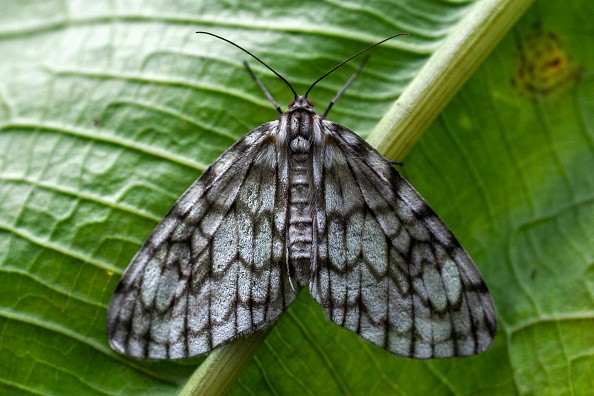When hunting for flowers that produce nutrient-rich nectar or seeking a host plant on which to deposit their eggs, nocturnal moths, such as tobacco hawkmoths (Manduca sexta), rely mostly on their sense of smell.
In a natural world full of a vast range of scents, a group of scientists is currently investigating how these insects can identify the aromas that are critical for life from those that are inconsequential.
The question arises from the fact that nectar supplies and appropriate host plants for the tobacco hawkmoth's progeny are few in the tobacco hawkmoth's native environment.
These plants, however, appear to be discovered by the moths.
According to Sonja Bisch-Knaden, the main author of the study, they wanted to see if the olfactory system can also filter out faint odor signals if they offer the moths hints that direct them to food sources or oviposition sites.
The olfactory system of tobacco hawkmoth
 (Photo : JOAQUIN SARMIENTO/AFP via Getty Images)
(Photo : JOAQUIN SARMIENTO/AFP via Getty Images)

The scientists collected beautiful odors of agave, Mirabilis longiflora (sweet four o'clock), or datura from the ecological surroundings of tobacco hawkmoths in Arizona in earlier studies as key nectar sources for the moths or host plants for the larvae, as per ScienceDaily.
In addition, the aromas of several nearby plants were gathered to include as many odors as possible that tobacco hawkmoths encounter in their natural habitat.
The study team took great care to gather scents from natural plant communities that had already been damaged by animals or modified by nearby plant development.
The odors were only collected at night when tobacco hawkmoths were prevalent.
Researchers are trying to get as near as possible to the natural odor mix that moths experience at night. They employed the nighttime odor emissions of 17 distinct plants in total.
The perception of these scents was next investigated at two levels: the antenna, which is the moth's olfactory organ, and the brain.
The team of Sonja Bisch-Knaden experimented with virgin and mated female tobacco hawkmoths.
Electroantennographic monitoring of olfactory epithelium activity was combined with a gas chromatograph to evaluate specific scents from an odorous mixture in the physiological experiments.
The activity frequencies of odor-processing neurons in the brains of tobacco hawkmoths were also seen using calcium imaging.
Electroantennographic monitoring of olfactory epithelium activity was combined with a gas chromatograph to evaluate specific scents from an odorous mixture in the physiological experiments.
The activity frequencies of odor-processing neurons in the brains of tobacco hawkmoths were also seen using calcium imaging.
Also Read: Gypsy Moth's Name Changed After People Found it 'Offensive' to Marginalized Communities
The evolution of the moths in context and perspective
Tobacco hawkmoths appeared to be trying to avoid competition for their progeny, as per Phys.org.
Nonetheless, it was surprising that a single class of volatile molecules found in larval feces (6-carbon aliphatic acids) may be enough to cause avoidance behavior.
Moths were repelled by several of the frass-related chemicals in behavioral testing in the wind tunnel, where they were subjected to specific odor constituents on filter paper.
Interactions between plants and insects are varied and complicated.
They've evolved through time and may be adjusted when a parameter changes.
Tobacco hawkmoths lay much fewer eggs on plants that are already being attacked by caterpillars, which is not a novel observation.
Furthermore, the odor of larval excrement is known to attract predators, the larvae's adversaries.
Conspecifics who would otherwise fight for food are kept at a distance by the same larval frass, which was previously unknown.
As a result, the chemical signal from the frass benefits not only the caterpillars that are already eating on a plant but also the hovering moths: by avoiding the odor of larval excrement, they may be able to find better food for their progeny.
Related article: 'Moth Roads' Might Help Mitigate the Effects of Climate Change
© 2024 NatureWorldNews.com All rights reserved. Do not reproduce without permission.





